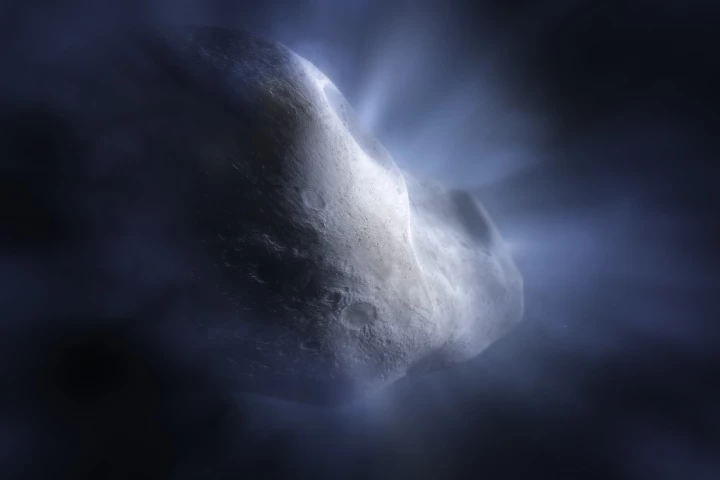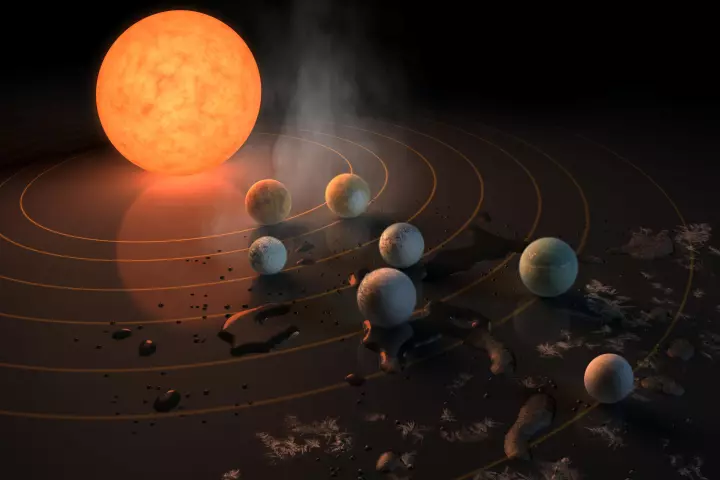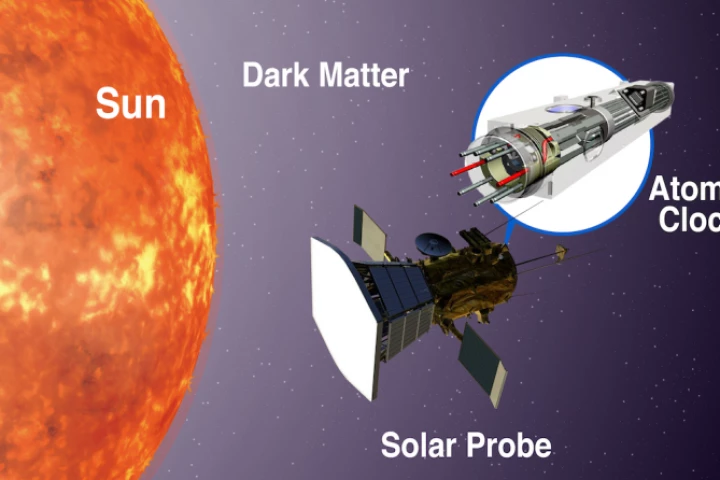Solar System
-
Solar wind – charged particles from the Sun – pervades our solar system, but the exact mechanism behind it remains murky. Now ESA’s Solar Orbiter spacecraft has observed previously unknown tiny flares on the Sun’s surface spewing plasma into space.
-
Radioactive isotopes found in meteorites suggest a supernova went off right near the Sun as it was forming – but that should have blasted the young solar system away. So how did we survive? A new study proposes an explanation.
-
The James Webb Space Telescope has detected water vapor on an object in the asteroid belt, a region of the solar system where it wasn’t known to survive. The new observations also reveal something unexpectedly missing.
-
Astronomers have classified planetary systems into four distinct categories, based on the sizes and arrangements of their planets. As it turns out, the architecture of our own solar system is the rarest kind.
-
Meteorites often burn up in Earth’s atmosphere, but a fireball over Canada last year may shake up our understanding of the solar system. Scientists traced its origins back to a distant cloud of comets that wasn’t thought to host any rocky material.
-
Astronomers have detected an eerie glow of “ghost light” that could represent a previously unknown component of the solar system. Comparing data from two distinct viewpoints – Hubble and New Horizons – researchers discovered a dim, unexplained glow.
-
Dark matter remains elusive despite decades of searching. Now physicists have proposed a new experiment that would try to find signals by sending atomic clocks to where dark matter should be at its most dense – right near the Sun.
-
Tree rings can preserve a snapshot of the Earth throughout the tree's life. Now Australian scientists analyzing these records have found evidence of huge radiation storms that periodically bathe the planet – and their origin remains a mystery.
-
Saturn is home to several solar system mysteries. Using data from Cassini, astronomers now suggest a simple answer to a few questions – a lost moon once orbited the planet before being torn to shreds.
-
A six-year round trip to an asteroid has yielded unprecedented insights into the formation of the solar system. Scientists have analyzed samples returned from asteroid Ryugu, finding a detailed history starting with the oldest material ever found.
-
Astronomers have found more evidence of giant ice volcanoes on Pluto. New analysis of data and images gathered by the New Horizons mission have revealed unique surface structures that seem to have been produced by something known as cryovolcanism.
-
Astronomers have discovered the first known quadruple asteroid system. A team from Thailand and France spotted a third moon orbiting the main-belt asteroid Elektra, moving the object into the record books.
Load More











